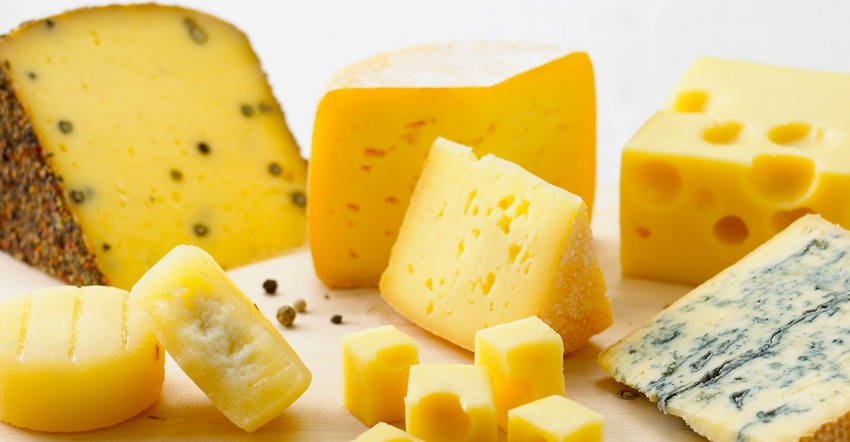March 18, 2021

High blood pressure contributes to almost half-a-million deaths in the United States each year. To help manage the condition, called hypertension, health care professionals recommend exercise and a healthy diet. For many patients, changing these habits is a difficult task. But how easy would it be if cheese — yes, cheese — could help reduce hypertension?
It sounds far-fetched, but researchers at the Center for Dairy Research (CDR) have good reason to think it’s possible to make cheese with measurable, positive impacts on hypertension. “Functional foods,” such as probiotic-rich yogurt and kefir, provide specific health benefits. And while interest in these specialty products continues to grow, most people wouldn’t look to cheese as a potentially anti-hypertensive food. But special compounds generated during the cheesemaking process might lend the product this quality.
Peptides part of study
As cheese is crafted and aged, rennet and other enzymes break down proteins into smaller fractions called peptides. In some cases, dairy-derived peptides serve regulatory functions in the human body that help reduce hypertension, boost immunity, and promote anti-inflammatory and antioxidant activity.
Because they initiate a physiological response, these peptides are called “bioactive peptides,” and they’re the focus of study for Rodrigo Ibáñez, an associate scientist at CDR. Ibáñez will be using traditional and non-traditional cheesemaking techniques to try to produce cheeses with higher amounts of bioactive peptides.
“We have two research questions,” Ibáñez says. “Can we make cheeses that have increased levels of bioactive peptides that confer anti-hypertensive properties, and if so, what happens after we consume the cheese?”
New cheeses tested
It’s not yet known whether bioactive peptides survive the digestion process so they can be absorbed by the body and confer their health benefits. To find the answer, Ibáñez will collaborate with Brad Bolling, a professor in the Department of Food Science at UW-Madison’s College of Agricultural and Life Sciences. Bolling and his team will test the new cheeses in a simulated gastrointestinal digestion model to see what happens.
“With any food, we need to consider the metabolism and bioavailability of functional ingredients, which means taking a closer look at how the food is digested and how these compounds are absorbed,” Bolling says.
Questions remain
Cheese is a traditional food that has been consumed for thousands of years, but studies of its potential anti-hypertensive properties are new, with the CDR contributing to this body of work. In 2016, CDR scientists, including Director John Lucey, published a paper describing how commercially produced cheddar cheese contains significant levels of bioactive peptides. But questions remain.
“We don’t know how much cheese you would need to consume to get an anti-hypertensive effect,” Ibáñez says. “But maybe it would be possible one day to make a single-serving portion of cheese you could eat to help control hypertension.”
For Lucey, it’s this potential to help create healthier new products — or put new twists on current dairy products — that makes the research worth pursuing.
“Most people think of cheese as tasty but don’t really think of the nutritional side of cheese, even though it contains lots of important nutrients like proteins, vitamins, and minerals,” Lucey says. “This work has the potential to help enhance cheese’s image as a healthy food.”
The Dairy Innovation Hub, a state-funded, cooperative research effort among the UW campuses of Madison, Platteville and River Falls, is supporting this project through a grant.
Source: UW-Madison CALS, which is responsible for the information provided and is wholly owned by the source. Informa Business Media and its subsidiaries aren’t responsible for any of the content contained in this information asset.
You May Also Like




